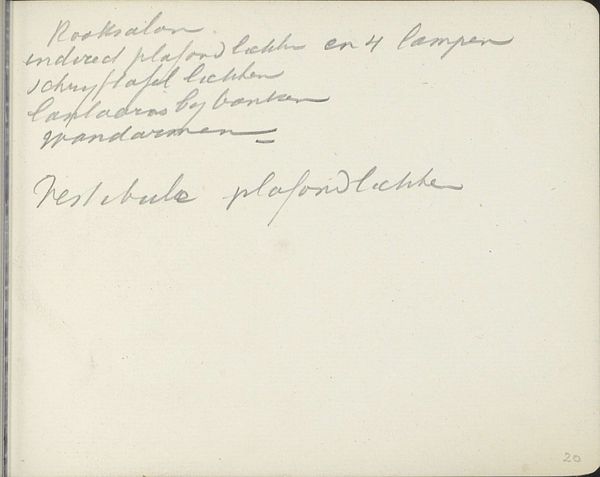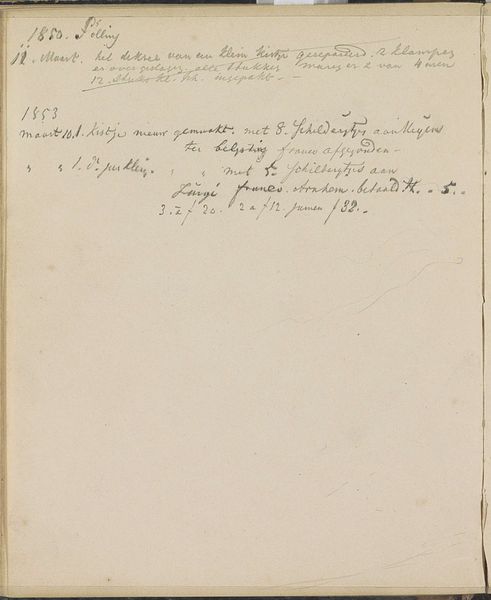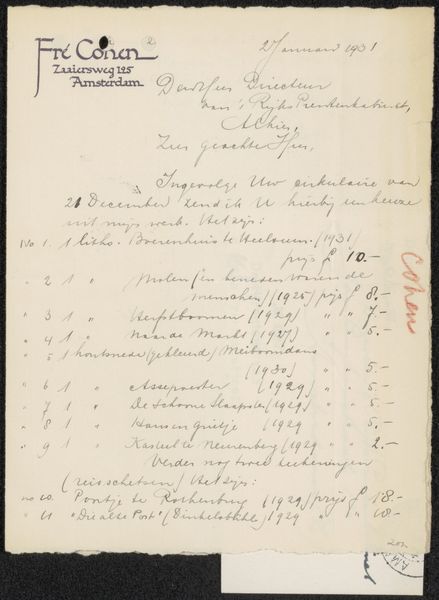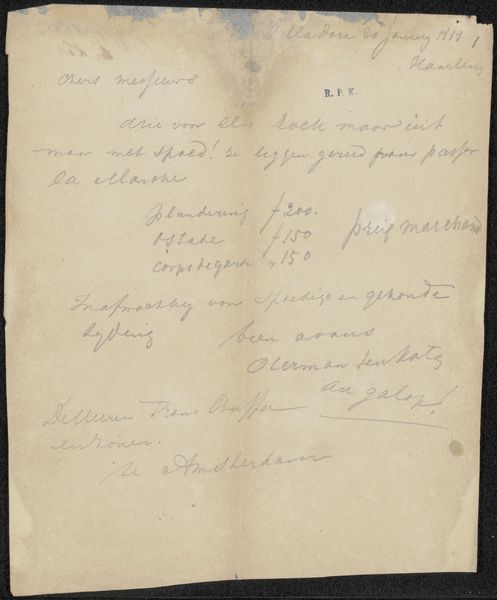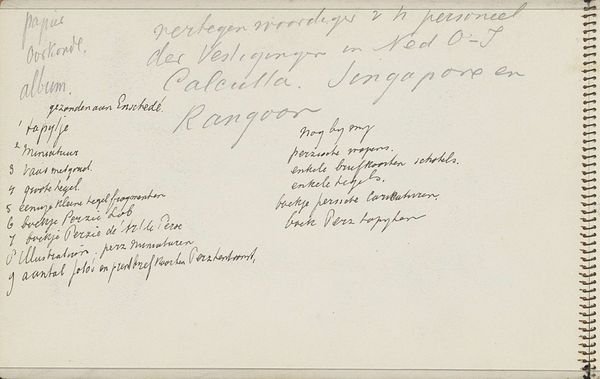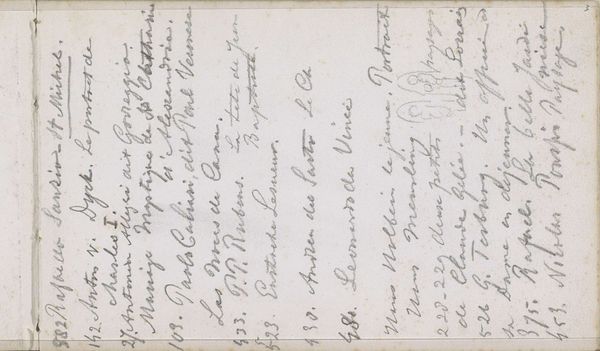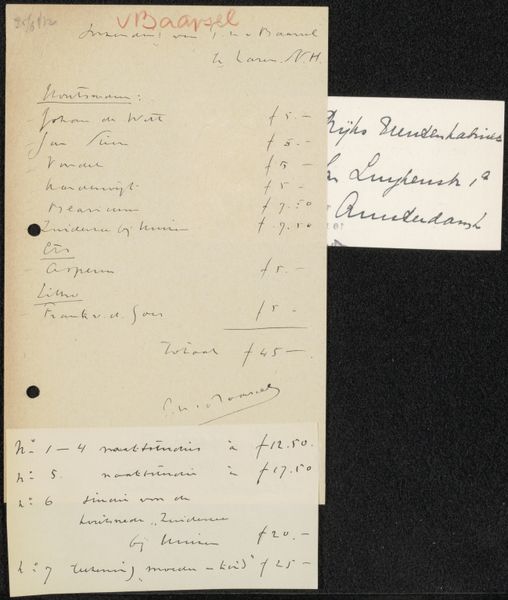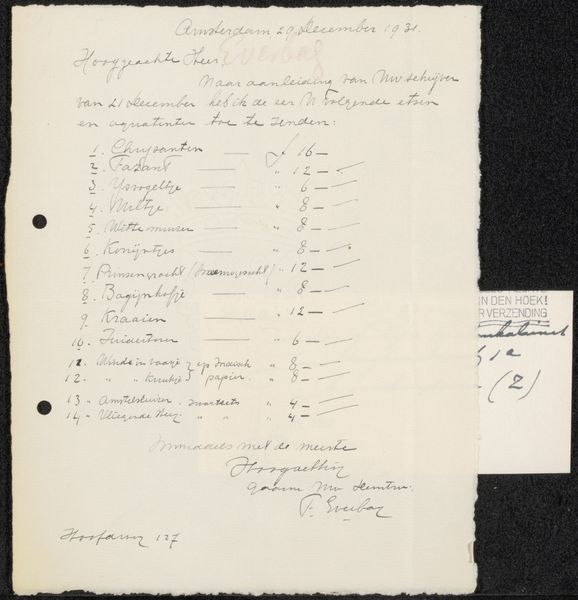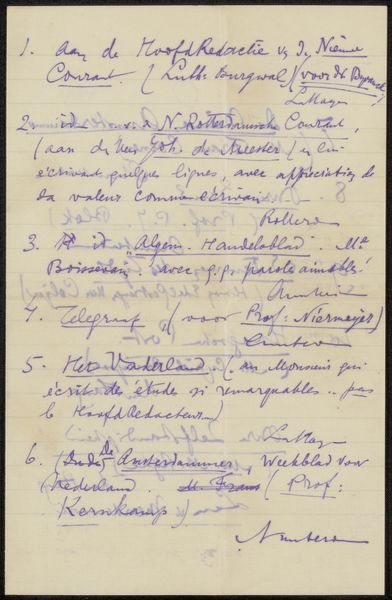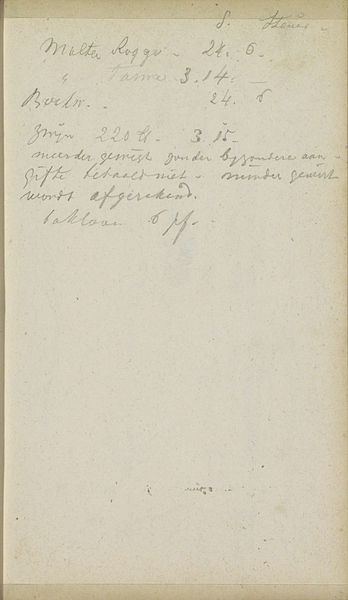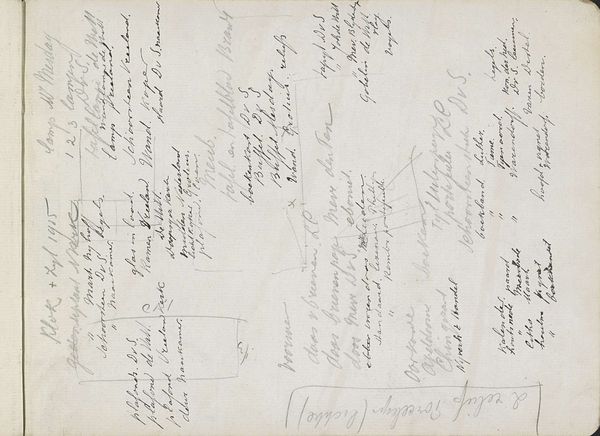
drawing, paper, ink
#
drawing
#
hand written
#
hand-lettering
#
hand drawn type
#
hand lettering
#
paper
#
personal sketchbook
#
ink
#
hand-written
#
hand-drawn typeface
#
fading type
#
geometric
#
abstraction
#
sketchbook drawing
#
sketchbook art
#
modernism
Copyright: Rijks Museum: Open Domain
Curator: So, we're looking at "Notes on Electric Light" by Carel Adolph Lion Cachet, circa 1928. It's ink on paper. What are your first thoughts? Editor: It feels… fragmented. Almost like a shopping list of lighting ideas, but I'm not sure for what purpose. How do you interpret this work beyond its surface level of just being notes? Curator: Precisely! It’s easy to dismiss as mere scribbles, but consider the context. This was the late 1920s, a period of intense electrification, but also of deep social division. Electric light wasn’t just a utility, but a symbol of modernity and progress accessible to specific groups and largely inaccessible to the global poor, deepening global divisions in its selective deployment. The hand-lettering feels intentional, almost a crafted rebellion against the coldness of the industrial process providing power and lights, right? What’s missing from the lists? Editor: I see your point. By handwriting them, he's maybe humanizing this new technology, but I don't understand the absence of details, nor understand for whom. Why is there an absence of details? Why the list? Curator: What do you feel has an absence? Perhaps the absence signifies that not all will benefit or use these "notes" – that access and power aren't uniformly spread out, the benefits unevenly accessed according to power? So how might this relate to gender, race, class at the time? The starkness reminds me of minimalist poetry confronting societal change, and the drawing challenges the narrative that modernism and technology only move forward. Editor: Okay, I never would have considered that. It sounds like these notes could even be critical of technological progress in a certain light? That the list could speak to divisions rather than inclusion. Curator: Absolutely. It’s a visual statement, intentionally crafted. Editor: I'll never look at a shopping list the same way again. Curator: Hopefully so! Understanding art's power is understanding the conditions of power themselves, who has it, and how to be wary when looking for "progress."
Comments
No comments
Be the first to comment and join the conversation on the ultimate creative platform.
